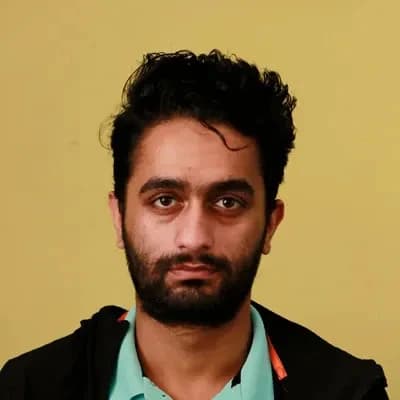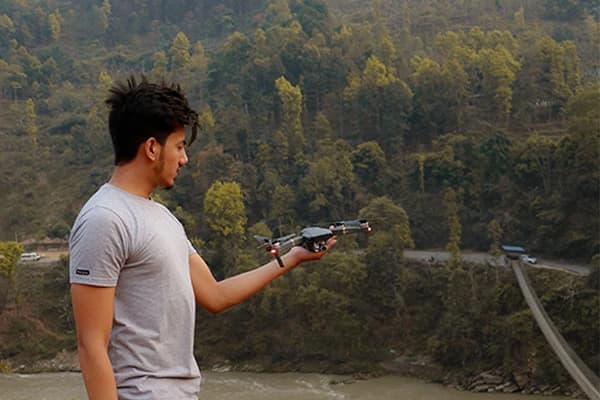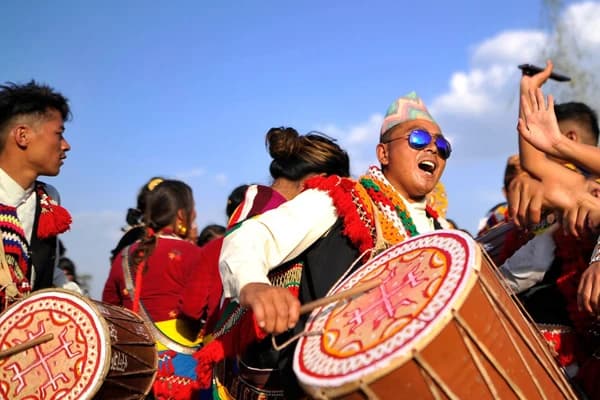New Year 2083
Popularly known as nawabarsha in nepal 2083, Nepal has its national calendar that begins on the first day of the very first month of Baisakh. This first day usually falls in the second week of April. This new year signifies unity among all the Nepalese people and most people take a vow to do and achieve well from the beginning of the new year.

They eat delicious foods, go on picnics/outings, and spend quality time with close families and friends.
Dashain Festival
Dashain Festival is one of the greatest festivals in Nepal going to be celebrated in 2026. Dashain is celebrated with great joy by Hindu followers all over Nepal. This festival signifies unity, the victory of truth, and the inception of happiness.
Dashain generally falls in the Nepali month Ashaad(September) and lasts for 10 days. Each day has special rituals and activities to be performed. The festival starts from Ghatasthapana, people sow rice and barley seeds in their houses to grow seedlings called Jamara.
The first nine days of the festival are popularly called Navaratri. The goddess Durga is worshipped during this period. The 7th day is known as Fulpati and on this day Jamara is brought to the Hanuman Dhoka, Kathmandu from the Gorkha Durbar with the help of the priest. From Fulpati (8th day) until the 9th day, people sacrifice goats, ducks, buffaloes, and other birds to the Goddess Durga.

The main day of the tika i.e. the 10th day is called Vijaya Dashami. On this day, people receive Tika (red-colored rice seeds) on their forehead and Jamaraon on their heads along with the blessings of the elder ones. People visit their relatives and enjoy delicious food items on this day.
Talking about myths of main dashain festival, according to Hindu mythology, the Dashain festival is a way of acknowledging victory over an evil spirit. The festival came into existence when Goddess Durga won a fight against an evil-spirited demon named Mahisasur who spread terror and horror. The goddess Durga killed this demon in a war that lasted several days.
Tihar (Festival of Lights)
Tihar 2026 is one of the greatest festivals celebrated in Nepal after Dashain. It is popularly known as Dipawali and even as the Festivals of Lights. Diwali is best known as Diwali in India. It falls in the month of Kartik (Lunar Calendar) and continues for 5 days.
Every 5 days of this festival is for celebrating and worshipping different animals and gods. In ancient mythology, Crows are known to be the " messengers of death; And the first day of Tihar is Crow Day. People feed crows and worship them to bring good luck to themselves.
The second day of tihar is popularly known as Kukur Pooja where humans worship dogs. On the third day of the Tihar is Gai Pooja-Laxmi Pooja (worship of the cows and goddess Laxmi). In the mornings, cows are worshipped and hung garlands around their necks and in the afternoon the entire house is cleaned and groomed.
People even put traditional and fancy lights outside their houses. Starting on this day, people (especially children and teenagers) come together and visit houses to sing Deusi and Bhailo (traditional songs) and earn money as well. The fourth day of Tihar is also known as Govardhan Pooja. On this day people worship Oxen.
This day is also taken as the start of a new year for the Newari community. Similarly, they celebrate " Mha Puja & quot; The widely celebrated fifth day of the Tihar also known as Bhai Tika. On this day brothers and sisters come together. Sister applies multi-colored tikas which are also called Saptarangi Tika on their brother's forehead.
According to Hindu mythology, Yamraj (the god of death) visited his sister the Yamuna, on this day she applied the auspicious tika on his forehead garlanded him, and fed him special Tihar dishes. That day Yamraj announced that anyone who received tika from their sister would never die on that day. So it gave birth to Bhai Tika.
Teej Festival
Teej festival is popular among Hindu women where women have a heavy breakfast in the morning before beginning a full-day fast. The fast is held as a prayer for the children and husband's long life and good health, and also for self-purification.

Women gather together and start singing and dancing the whole day and enjoy various sweets and dishes once the fast is broken. This festival is celebrated in August(Bhadra in the Lunar calendar).
Chhath Parva
The word Chhath is derived from the Sanskrit word & quot; Shasthi & quot; which means the 6th. This festival is celebrated after the Tihar festival and is an ancient Hindu festival historically native to the Indian subcontinent. This ancient festival is dedicated to God and the Sun.
Chhath Parva is observed for 4 days from Kartik Shukla Chaturthi to Kartik Shukla Saptami (according to the Lunar calendar) in 2026. To this day, married women take fast for a longer and better life for their family members. Besides, people take a holy bath in the river believing they can get rid of all their sins.
During chhat festival, there is no idol worship and no requirement for priests. This festival begins with Nahay Khay which is followed by a 36-hour long niirjala fast and ends by offering Usha Arghya. The exact origin of this festival is ambiguous but certain beliefs connect to Hindu epics.
Ramayana and Mahabharata are the two epics that are associated with Chhath Puja. Chhath is a Vedic ritual dedicated to the Hindu solar deity Surya, and Ranbay of public faith regarding the Chhath festival. It is believed that Mata Sita performed Chhath festival in Munger.
Mahashivaratri: Night of Lord Shiva
This auspicious festival is dedicated to Lord Shiva (the most supreme Hindu deity). This festival is celebrated by Hindus all around the country by visiting the temples of Lord Shiva and worshipping Shivalinga in 2026. Pashupatinath temple in Kathmandu Valley gets fully bustling during this festival.

This mahashivaratri festival signifies overcoming the darkness and bringing joy and happiness into our lives. There is Shivaratri is every lunisolar month of the Hindu calendar, on the month's 13th night/14th day (February). It would help if you visited Pashupatinath temple during this festival to encounter Sadhus/Sanyasi/Aghori on temple premises.
Holi (Falgu Purnima)
This festival widely known as the festival of colors is one of the most vibrant and lively festivals celebrated in Nepal in 2026. Falgun Purnima is celebrated with dry colors, water balloons, and water guns. People also light bonfires as a celebration of the death of Holika (the demon).

This festival is celebrated on a full moon day in the month of Falgun, from February to mid-May-Spring season. It is the most popular festival in Nepal with friendships, colors, and love. As a token of love and harmony, people put colors on each other. The people of the Terai region of Nepal celebrate Holi the next day in Kathmandu. Lassi mixed with Bhaang (psychedelic substance) is also a common ritual practiced in this festival.
Maghi (Maghe Sankranti)
Maghi festival is celebrated by the people of the Tharu community in 2026. They call the first of Magh & quot; Maghi" The first of Magh is also considered the beginning of Tharu New Year. This festival is also considered to be the beginning of warmer days in comparison to the cold month of Poush (December).
During the festival, they perform their cultural dances, dress up in the traditional Tharu wear, and eat and drink with their near ones. On this day, devotees gather around the holy rivers and take a bath. The feasts with special meals such as Yam, Khichadi, Butter, Chaku, etc are prepared to share the joy and happiness around.

The Newar community, inhabitants of Kathmandu Valley, celebrate makar sankranti as Gheu Chaku Sandhu. Also on this day, Newari people massage their heads and the body with sesame oil as this signifies that become helps us be healthier and warmer during the cold weather.
It is believed that Bhismapitamaha (who was the son of river Ganga and king Santanu in the Epic Mahabharata) had control (Ikcha Mirtu) in his death. This is the day when Bhisma was lying in the bed of arrows all hit by Arjuna and discovered the words of wisdom of life and death.
Janai Purnima (Rakshya Bandhan)
This janai purnima festival lies in the full moon fortnight of Bhadra (August) of 2026. It is a Hindu festival celebrated all over the country and is mainly concerned with Brahmins and Chhetri ethnics. It is the festival in which Hindus renew their sacred thread, the holy thread is given to the Hindu men during their Bratabandha(Hindu ritual for boys) and is changed on this day by performing holy rituals with the help of a priest.

There is also a common tradition for girls to put Rakhi on the wrists of their brothers believing that it would protect them from evil. The brothers, in return, give gifts to their sisters.
Biska Jatra
This major festival is celebrated throughout Bhaktapur including Bhaktapur Durbar Square and Thimi Balkumari as the main venue for the event in 2026. Hundreds of devotees pull a chariot carrying a statue of the God Bhairav to the Khalna Tole. This popular nine-day festival was initiated by King Jagajyoti Malla of Bhaktapur.
Bisket Jatra is celebrated at the start of the Nepali New Year (mid-April) on the Bikram Sambat calendar although this festival itself is not related to Bikram Sambat. One of the most exciting events is a huge tug-of-war between the upper and lower areas of the towns of Bhaktapur. The collision of chariots representing male and female deities, Bhairab and Bhadrakali, symbolizes ritual fulfillment and fertility.
The two parts of the chariots are wired together by wires and not a single nail is used. After the battle, the chariots head to Khalna Tole, where a 25m-high Lingo (pole) is erected in the stone yoni (female genital symbol) base. On the evening of New Yearday, the pole is pulled down.
As the pole crashes to the ground, the New Year officially begins. On the second day, Balkumari Thimi hosts a colorful festival (Sindhu Jatra). People celebrate this beautiful day by throwing simrik color powder, sharing greetings, and playing Dhimay music. Bode, an ancient Newari city lying at the east corner of Kathmandu valley witnesses a tongue-piercing ceremony, with one villager spending the day with an iron spike piercing his tongue.
Indra Jatra
Kathmandu Valley is well renowned for its diverse cultural interests. You can't miss indra jatra while you are in this wonderland in 2026. King Gunamkamadev started Indra Jatra in the 10th century. This festival is widely celebrated during the month of Falgun according to the Lunar Nepali calendar.
The celebration lasts for 8 days and the prime venue for this event is Kathmandu Durbar Square. Also, Kumari Jatra became part of this festival in the mid-18th century. It was started in 1786 AD during the reign of Jaya Prakash Malla. Indra Jatra is celebrated with the erection of Lingo (sacred wooden pole made of pine ) at Hanumandhoka premises in Basantapur Durbar Square.
In Kumari Jatra, three chariots carrying a human representation of the god Ganesh, Kumari, and Bhairav followed by musical bands are pulled along the festival route through Kathmandu for 3 days. If you are visiting Kathmandu during this event, you will have lifelong memories of the unique culture that the Newars of Kathmandu celebrated proudly.
Lhosar (Tibetan New Year)
This popular festival involves devotees from all over Nepal rejoicing through various dance forms, music, and exchanging gifts. As a celebration of the New Year, people also eat delicious dishes and consume local Tibetan drinks.

This is a widely celebrated festival in Tibetan Buddhism.

Ethnic groups such as Sherpa, Tamang, and Gurung celebrate Lhosar with pure joy and devotion. "Lo" means year or age and "Sar" means new. So, the full meaning of this festival is the beginning of a new era.

The Popular lhosar celebrated in Nepal are gyalpo lhosar ( celebrated by sherpas), sonam lhosar ( celebrated by tamangs), and tamu lhosar (clebrated by gurungs).
Mani Rimdu (the festival in the Everest region)
This 19-day festival is annually celebrated in the Solukhumbu district of the Everest region. Mani means part of the chant of Chenrezig and Ribu or Rimdu means small red pills blessed during the festival. This is the biggest event in the Everest region celebrated by Sherpas.
It also marks the founding of Buddhism by Guru Rinpoche Padhmasava in the 8th century. It is celebrated in the monasteries of Tengboche, Thame, and Chiwong. This festival is observed from the first day of the tenth month of the Tibetan lunar calendar which falls between October and November.
On this day, Monks read their holy scripts and perform ritualistic dances. Talking about its history, first began at the Rongbuk monastery of Tibet in the early 1990s with the initiative of Ngawang Tenzin Norbo. In Trulshik Rinpoche's estimation, Mani Rimdu started between 1907 to 1910 and moved to Solukhumbhu in about 1940. This festival signifies the victory of positive forces against destroying evil demons. It is also believed that Buddhism was recreated during Mani Rimdu.
Buddha Jayanti
Buddha Jayanti translates to the birth anniversary of budhha and is celebrated every year during May in Nepal in 2026. This festival is regarded as a special occasion for both the Hindus and Buddhists. People celebrate this day as the day of the Buddha's birth, enlightenment, and death.
Boudhanath and Swayambhunath in Kathmandu valley are the bustling sites for the day of Buddha Jayanti. Similarly, in Lumbini (the birthplace of Gautam Buddha) this festival is celebrated with deep devotion.
To Sum up..
These were some popular festivals to observe in Nepal in 2026. You can also experience more than 50 festivals throughout the year with their authenticity, no matter the festival, the celebration of each festival in Nepal is equally enjoyable and vibrant.
For more details about the festival and cultural tour in Nepal, contact us.















